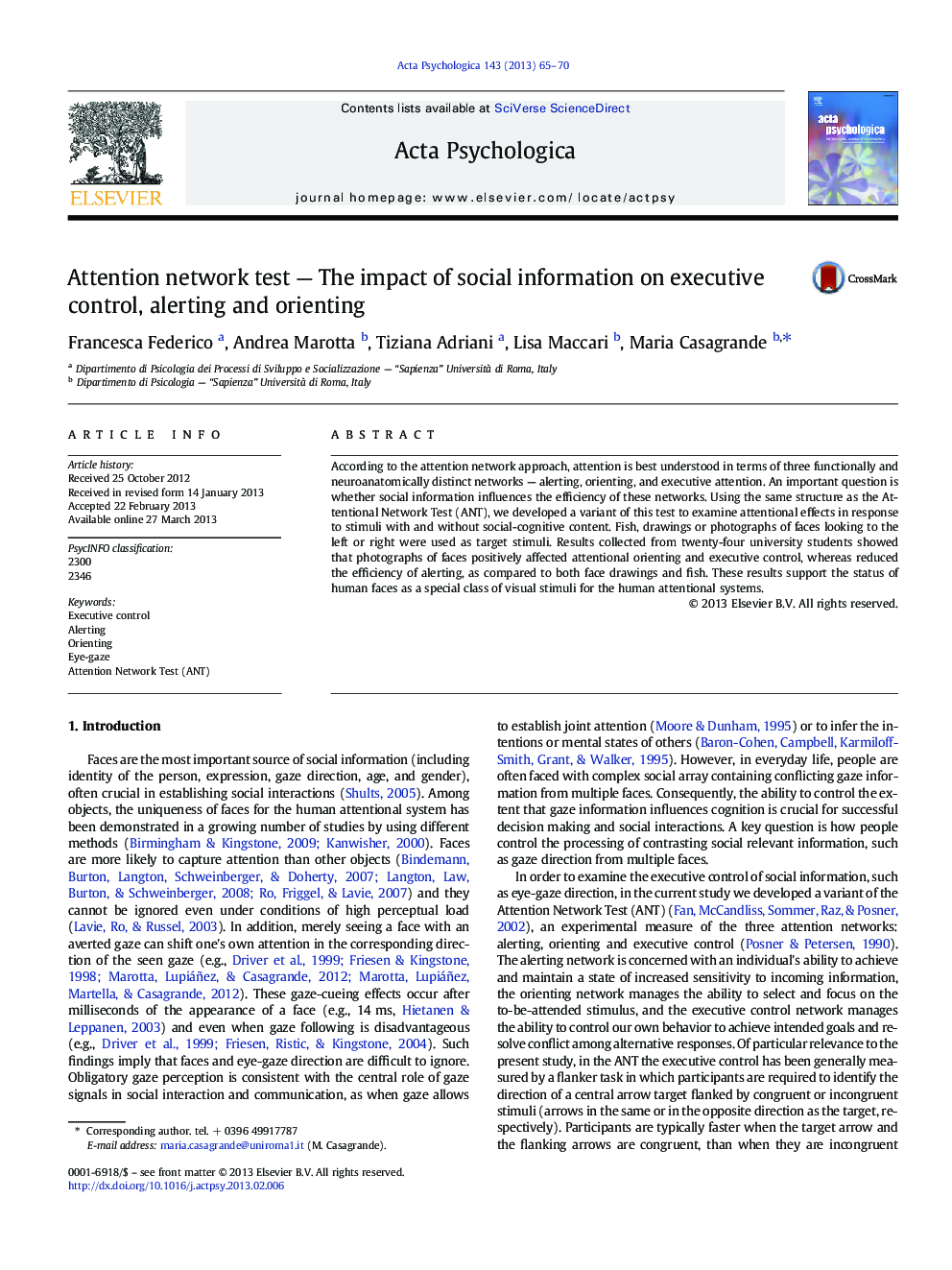| Article ID | Journal | Published Year | Pages | File Type |
|---|---|---|---|---|
| 919865 | Acta Psychologica | 2013 | 6 Pages |
According to the attention network approach, attention is best understood in terms of three functionally and neuroanatomically distinct networks — alerting, orienting, and executive attention. An important question is whether social information influences the efficiency of these networks. Using the same structure as the Attentional Network Test (ANT), we developed a variant of this test to examine attentional effects in response to stimuli with and without social-cognitive content. Fish, drawings or photographs of faces looking to the left or right were used as target stimuli. Results collected from twenty-four university students showed that photographs of faces positively affected attentional orienting and executive control, whereas reduced the efficiency of alerting, as compared to both face drawings and fish. These results support the status of human faces as a special class of visual stimuli for the human attentional systems.
•Cognitive control in response to stimuli with and without social-cognitive content.•Photographs of real faces positively affect orienting and executive control.•Real faces significantly modulate the functioning of the three attentional networks.
